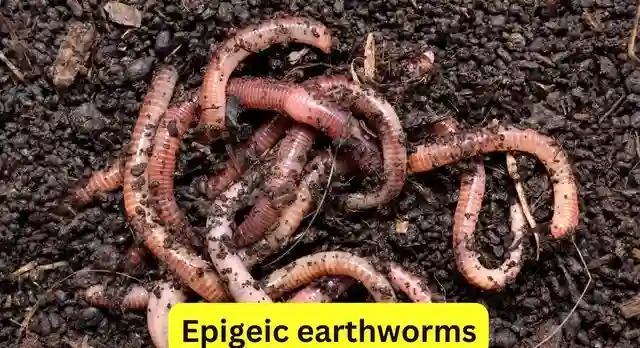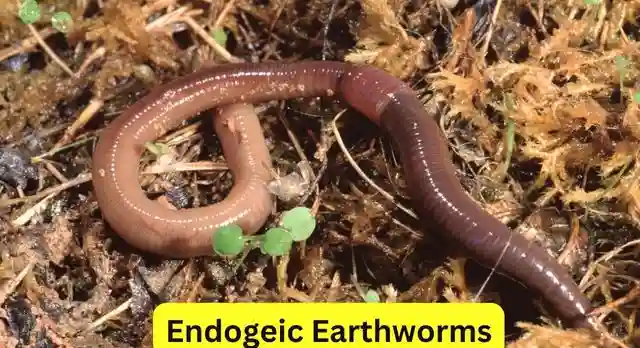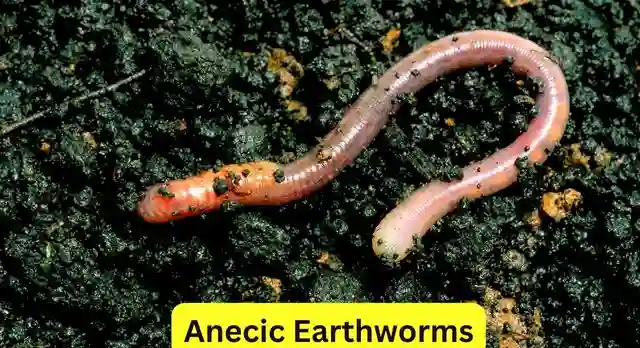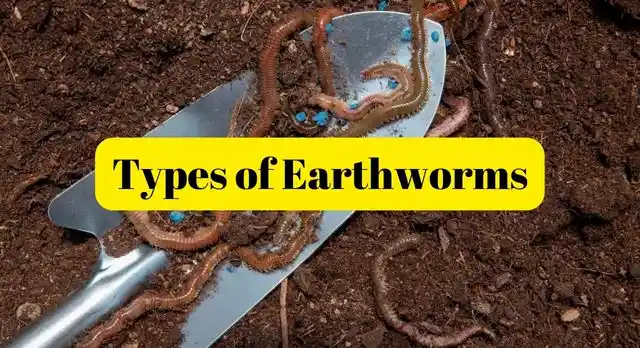Types of Earthworms: A Comprehensive Guide
As gardeners and nature enthusiasts, we often encounter earthworms while digging in the soil. These seemingly unassuming creatures play a vital role in maintaining soil health and fertility. However, did you know that there are various types of earthworms, each with its unique characteristics and ecological contributions? In this article, we will explore the diverse world of earthworms, from their physical attributes to their habitats and behaviors. So, let’s dive in and discover the fascinating types of earthworms that inhabit our planet.
The Diversity of Earthworms
Earthworms belong to the phylum Annelida and the class Clitellata. They can be found in various ecosystems worldwide, from forests and grasslands to agricultural fields and gardens. These remarkable creatures are classified into three main types based on their burrowing habits: epigeic, endogeic, and anecic earthworms. Let’s take a closer look at each type and learn more about their unique characteristics.
Earthworms are found in various regions across the globe, and they can be broadly categorized into three main groups based on their habitat and behavior. These groups consist of different types of earthworms, each with its own unique characteristics and adaptations.
- Epigeic Earthworms
- Endogeic Earthworms
- Anecic Earthworms
1. Epigeic Earthworms

Epigeic earthworms are commonly found in organic-rich environments such as leaf litter, compost piles, and the topsoil layer. These worms tend to have a reddish color and are relatively small in size. They are known for their rapid reproductive rates, with some species laying up to 500 eggs at a time. Epigeic earthworms primarily feed on decaying plant material, contributing to the decomposition process and nutrient cycling. Examples of epigeic earthworms include Eisenia fetida, commonly known as the red wiggler or manure worm, and Lumbricus rubellus, the red earthworm.
2. Endogeic Earthworms

Endogeic earthworms reside in the subsoil layer, often creating horizontal burrows that facilitate nutrient mixing and aeration. These worms are generally pale or pinkish in color and have a relatively smaller size compared to other earthworm types. Endogeic earthworms feed on soil particles, extracting organic matter and microorganisms as they ingest the soil. Their burrowing activities help improve soil structure and nutrient availability. Examples of endogeic earthworms include Aporrectodea caliginosa, known as the common soil worm, and Octolasion lacteum, the white-striped worm.
3. Anecic Earthworms

Anecic earthworms are the largest and most familiar type of earthworms. They build vertical burrows that extend deep into the soil, often reaching several feet in length. These worms have a darker pigmentation and a distinct banding pattern on their bodies. Anecic earthworms are known for their extensive burrowing activities and their ability to transport organic matter from the surface into the deeper soil layers. They play a crucial role in improving soil drainage and nutrient distribution. One of the most well-known anecic earthworms is Lumbricus terrestris, commonly referred to as the nightcrawler or dew worm.
Now that we’ve explored the three main types of earthworms, let’s delve deeper into their unique characteristics, habitats, and contributions to soil health in the following table:
| Earthworm Type | Physical Attributes | Habitat | Contribution to Soil Health |
|---|---|---|---|
| Epigeic | Reddish color, small size | Leaf litter, compost | Efficient decomposition of organic matter, nutrient cycling |
| Endogeic | Pale or pinkish color | Subsoil layer | Soil structure improvement, nutrient extraction from soil |
| Anecic | Dark pigmentation | Deep vertical burrows | Organic matter transportation, soil drainage, nutrient distribution |
Earthworm Species
Surprisingly, over 30 percent of the earthworms discovered in North America are of non-native origin. This indicates that they were brought to the continent through activities like importing and exporting plants or the trade of fishing bait worms. The existence of these non-native worms presents a considerable challenge, as they have the potential to invade and disturb the fragile equilibrium of natural ecosystems.
Here we have mentioned most common earthworm species.
- Redhead Worm
- Common Earthworm
- Green Worm
- Gray Worm
- Brandling Worm
- Kentucky Earthworm
- Giant Gippsland Earthworm
- Oregon Giant Earthworm
- Louisiana Mud Worm
- Washington Giant Earthworm
- Composting Worm
- European Nightcrawler
- African Nightcrawler
1. Redhead Worm
The Redhead Worm (scientifically known as Lumbricus rubellus) is a vibrant earthworm species with a reddish hue. It is widely distributed and commonly found in various regions. Known for its active burrowing habits, this earthworm plays a crucial role in improving soil structure and nutrient cycling.
2. Common Earthworm
The Common Earthworm (scientifically known as Lumbricus terrestris) is one of the most widespread and well-known earthworm species. It is characterized by its larger size and dark pigmentation. This earthworm is highly beneficial for soil health, as it creates extensive burrows, enhances soil aeration, and facilitates the breakdown of organic matter.
3. Green Worm
The Green Worm (scientifically known as Aporrectodea caliginosa) is an earthworm species with a greenish coloration. It is commonly found in grasslands and agricultural areas. Green Worms contribute to soil fertility by feeding on decaying organic material and improving nutrient availability through their burrowing activities.
4. Gray Worm
The Gray Worm refers to various species of earthworms with a grayish coloration. While there are multiple species that exhibit this color, one example is Lumbricus rubellus. Gray Worms contribute to soil health by improving soil structure, enhancing water infiltration, and aiding in nutrient cycling.
5. Brandling Worm
The Brandling Worm (scientifically known as Eisenia fetida) is a small earthworm species often recognized by its distinct reddish and yellowish bands along its body. Brandling Worms are highly adaptable and thrive in various environments. They are commonly used in vermicomposting systems for their ability to rapidly break down organic matter.
6. Kentucky Earthworm
The Kentucky Earthworm (scientifically known as Driloleirus americanus) is a species native to the United States, particularly found in Kentucky. It is known for its large size and important role in soil aeration and nutrient cycling. The Kentucky Earthworm’s burrows create channels that allow air and water to penetrate the soil.
7. Giant Gippsland Earthworm
The Giant Gippsland Earthworm (scientifically known as Megascolides australis) is an impressive species found in the Gippsland region of Australia. It holds the title for being the world’s largest earthworm, reaching lengths of up to 3 meters. This remarkable worm resides in deep burrows and contributes to soil fertility through its burrowing and nutrient-mixing activities.
8. Oregon Giant Earthworm
The Oregon Giant Earthworm (scientifically known as Driloleirus macelfreshi) is an earthworm species endemic to the state of Oregon in the United States. This large and elusive worm is known for its remarkable size and subterranean lifestyle. The Oregon Giant Earthworm contributes to soil health by enhancing soil structure and nutrient availability.
9. Louisiana Mud Worm
The Louisiana Mud Worm (scientifically known as Polypheretima elongata) is a species found in wetland areas and muddy soils. It plays a vital role in soil aeration and nutrient cycling, particularly in marshy ecosystems. The Louisiana Mud Worm is adapted to thrive in moist environments and contributes to the overall ecological balance.
10. Washington Giant Earthworm
The Washington Giant Earthworm (scientifically known as Driloleirus americanus) is an earthworm species native to Washington State in the United States. It is notable for its larger size and deep burrowing habits. The Washington Giant Earthworm plays a significant role in enhancing soil drainage and nutrient distribution.
11. Composting Worm
“Composting Worm” is a term that encompasses various species of earthworms suitable for composting purposes. Examples include the Red Wiggler (Eisenia fetida) and the African Nightcrawler (Eudrilus eugeniae). These worms have specialized feeding habits and reproductive rates that make them highly effective in breaking down organic waste and creating nutrient-rich compost.
12. European Nightcrawler
The European Nightcrawler (scientifically known as Eisenia hortensis) is a large earthworm species native to Europe. It has gained popularity as a bait worm due to its robust size and lively nature. European Nightcrawlers are also valuable in composting systems, as they efficiently break down organic waste.
13. African Nightcrawler
The African Nightcrawler (scientifically known as Eudrilus eugeniae) is a species native to tropical regions of Africa. It is highly valued for vermicomposting due to its voracious appetite and efficient breakdown of organic waste. African Nightcrawlers are known for their adaptability and are widely used in organic waste management systems.
Key Takeaway
Earthworms are incredibly diverse creatures that greatly influence soil health and fertility. Understanding the different types of earthworms and their ecological roles is essential for gardeners, farmers, and environmental enthusiasts. Epigeic earthworms excel in decomposing organic matter, endogeic earthworms improve soil structure, and anecic earthworms enhance nutrient distribution and drainage. By recognizing the contributions of these soil-dwelling organisms, we can better appreciate their importance and make informed decisions to support their populations in our ecosystems.
So, the next time you come across an earthworm while tending to your garden or exploring nature, take a moment to marvel at the incredible diversity and ecological significance of these fascinating creatures. They are not just wriggling worms in the soil; they are the unsung heroes of healthy soils and thriving ecosystems.
Sources
CABI, Invasive Species Compendium
Global Invasive Species Database
What are the three types of earthworms?
The three types of earthworms are epigeic, endogeic, and anecic earthworms. These types differ in their habitats and behaviors.
What is the most common type of earthworm?
The most common type of earthworm depends on the region and environment. However, the red earthworm (Lumbricus rubellus) is one of the more prevalent species found in many areas.
How many types of earthworms are there?
There are various types of earthworms found worldwide. While it is challenging to determine an exact number, scientists have identified numerous species of earthworms with distinct characteristics.

